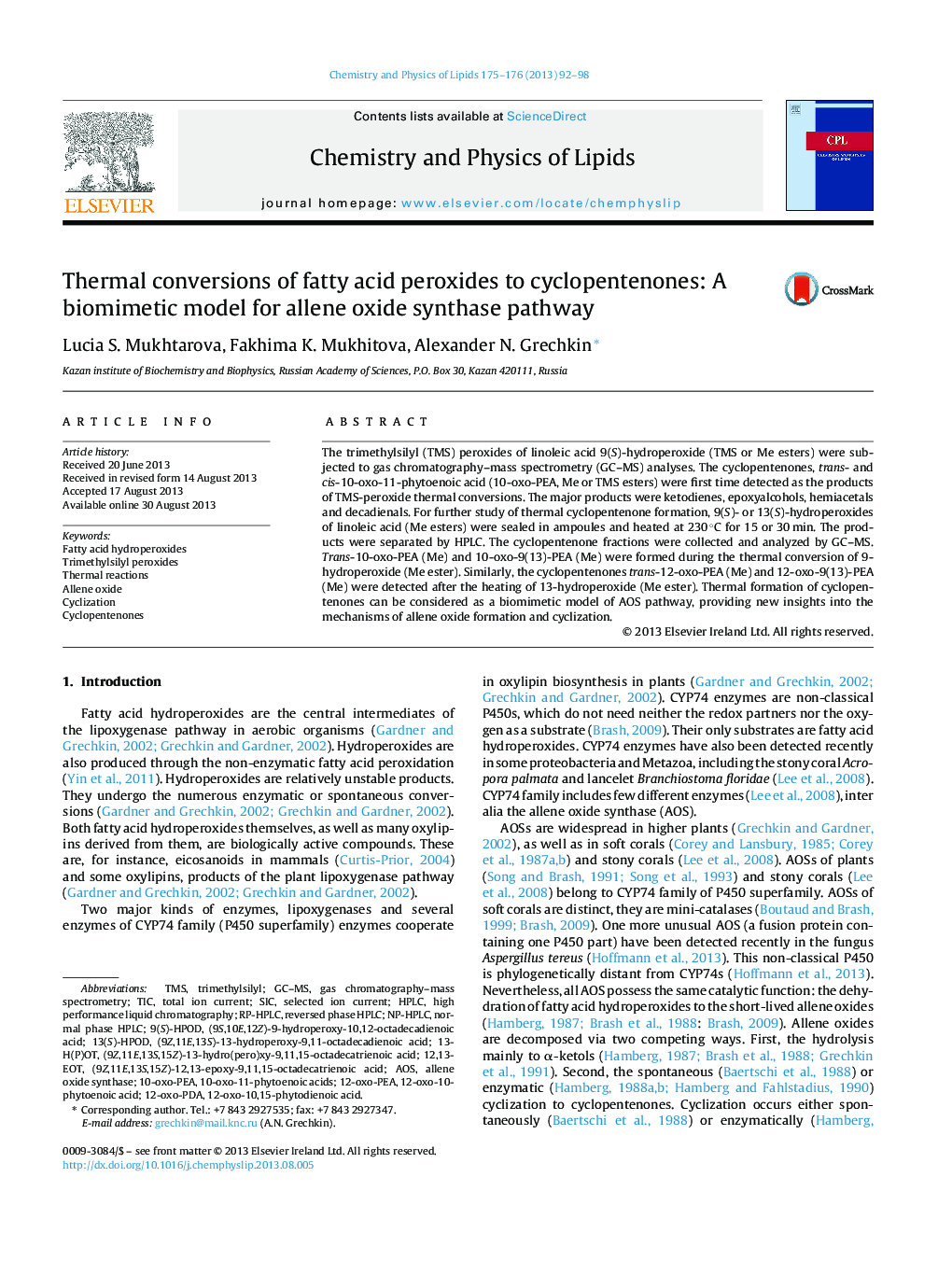| Article ID | Journal | Published Year | Pages | File Type |
|---|---|---|---|---|
| 1251855 | Chemistry and Physics of Lipids | 2013 | 7 Pages |
•Fatty acid TMS-peroxides afford numerous thermal conversion products upon GC–MS.•Cyclopentenones were detected first time along with other thermal products.•Thermal treatment of fatty acid hydroperoxides in ampoules affords cyclopentenones.•Thermal formation of cyclopentenones mimics the allene oxide synthase pathway.
The trimethylsilyl (TMS) peroxides of linoleic acid 9(S)-hydroperoxide (TMS or Me esters) were subjected to gas chromatography–mass spectrometry (GC–MS) analyses. The cyclopentenones, trans- and cis-10-oxo-11-phytoenoic acid (10-oxo-PEA, Me or TMS esters) were first time detected as the products of TMS-peroxide thermal conversions. The major products were ketodienes, epoxyalcohols, hemiacetals and decadienals. For further study of thermal cyclopentenone formation, 9(S)- or 13(S)-hydroperoxides of linoleic acid (Me esters) were sealed in ampoules and heated at 230 °C for 15 or 30 min. The products were separated by HPLC. The cyclopentenone fractions were collected and analyzed by GC–MS. Trans-10-oxo-PEA (Me) and 10-oxo-9(13)-PEA (Me) were formed during the thermal conversion of 9-hydroperoxide (Me ester). Similarly, the cyclopentenones trans-12-oxo-PEA (Me) and 12-oxo-9(13)-PEA (Me) were detected after the heating of 13-hydroperoxide (Me ester). Thermal formation of cyclopentenones can be considered as a biomimetic model of AOS pathway, providing new insights into the mechanisms of allene oxide formation and cyclization.
